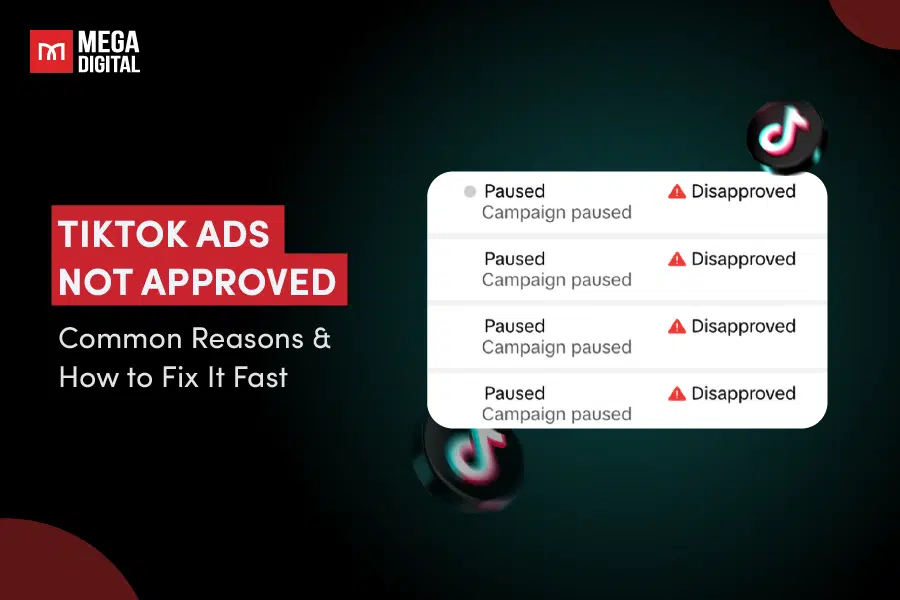Wondering how to sell art on Etsy and monetize your creativity? Whether you create paintings, illustrations, digital drawings, or unique crafts – Etsy is one of the most lucrative platforms for showcasing and selling your artwork. Let’s explore techniques to help turn your art into a nice fat profit!
What to Prepare Before Selling Art on Etsy?
There are a few things you have to do before selling art on Etsy to maximize your success. To better prepare for your venture, you can follow 3 simple steps below:
1. An Etsy Account and Shop
Before opening an Etsy store, the first thing to prepare is to research your niche.
After understanding the market and identifying your unique value, consider designing a brand by selecting a shop name, crafting a logo, and picking a color scheme.
Then, spend time taking quality product pictures and designing an eye-catching banner for the store. Also, remember to write your product description beforehand, highlighting features, benefits, and stories behind your art.

2. Product Information
Think about descriptive titles for your items before selling them on Etsy. A well-crafted title needs relevant keywords to improve search visibility.
Alongside the title, it’s important to address specific details such as materials used, dimensions, colors, and available customization options. Bear in mind that providing background information or the inspiration behind your work can help establish a deeper connection with customers.
3. Shop Policies
It is vital to decide on the policies before you set up your official Etsy shop.

For shipping and handling, think about how your goods will be shipped, the estimated time for delivery, and if there are any handling charges.
When it comes to returns and exchanges, you should identify circumstances under which customers are eligible for returns, exchanges, or receive refunds for their purchases.
If you offer custom-made or personalized orders, outline the production time, design details, and the extent of changes made.
Lastly, make sure you consider your payment options – whether deposits are required or whether installment payments are provided.
>>> Read more: What is Print on Demand? How to Get Started [2025]
Requirements for Selling Art on Etsy
Before learning how to sell prints on Etsy with ease, some of the company policies need to comply with Etsy requirements.
1. Unique and handmade
Except for craft supplies, most of the items listed on Etsy are either handmade or vintage. This means that whatever art you propose for sale, it has to be designed by you.
As for photos uploaded in your shop, you must take your pictures or videos, rather than using stock photographs, electronic graphics, or pictures supplied by third parties. Additionally, you must inform customers if any of your listings are AI-generated.
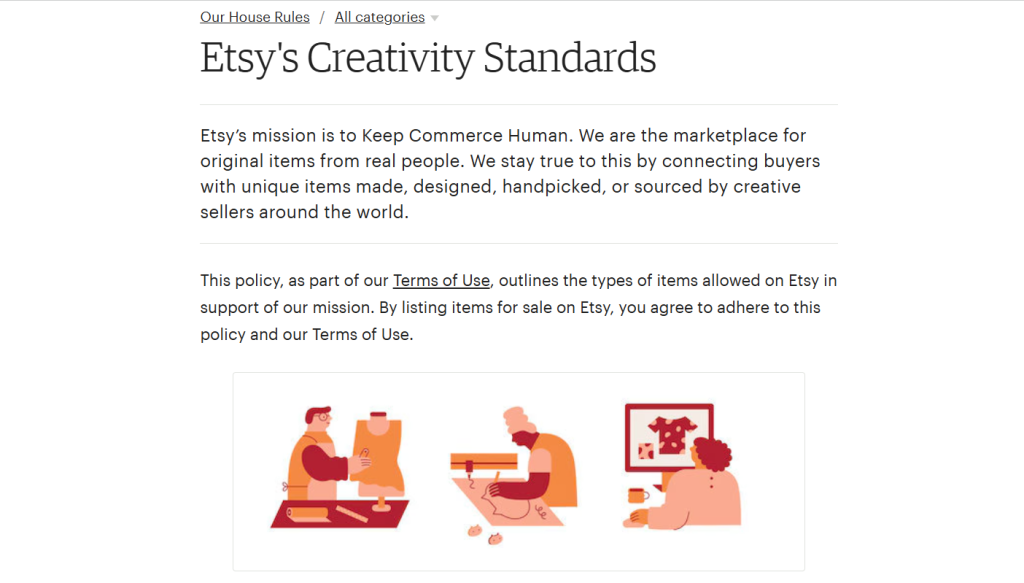
2. Shipping and Returns Policy
On Etsy, sellers have to set their own shipping and return policies for every item on every item they list for sale.
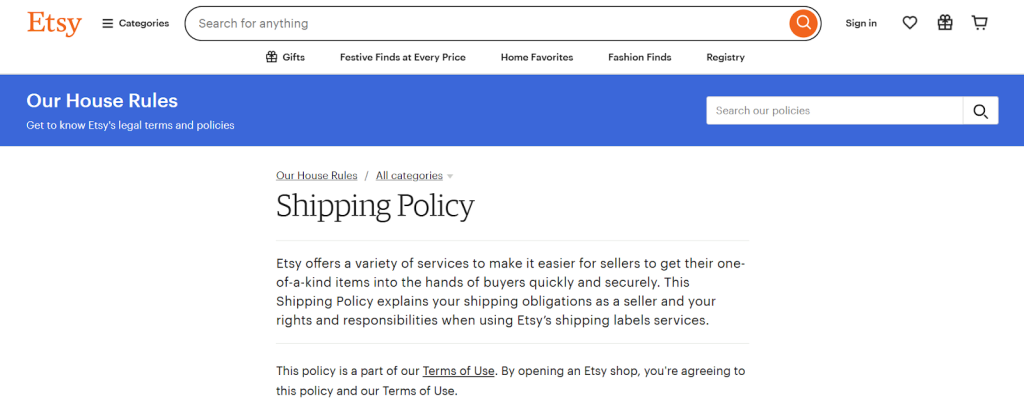
From the beginning, you have to specify your shipping costs and processing times in your listings. Otherwise, you must ship each item within 30 days of purchase. If you need more processing time, you will need approval from buyers via Messages.
For returns, Etsy does not require sellers to accept returns, exchanges, or provide refunds. However, you must state in the return policy on your listing clearly.
3. Tax Obligations
Sellers are responsible for managing any necessary tax collection and payment related to their sales on the platform. Although Etsy does not require sales tax, it will collect and send it on your behalf in some cases.
The rate will be applied to the most localized area you specify since tax regulations can vary greatly by location.
For instance, in the U.S., each state has its own rules for charging taxes. If sellers live in Colorado and earn $100,000 or more in revenue, they will be charged 6.47% combined tax, while Michigan sellers will be charged 6% combined tax for the same revenue.

4. Intellectual Property Compliance
Sellers are not allowed to sell items that infringe on intellectual property rights, such as copyrights, trademarks, or patents. If you use logos, images, or characters others own, you are committing intellectual property violations.
If you want to use the original creators’ materials, simply crediting them alone will not help. You must secure formal, written authorization or a licensing agreement to use copyrighted materials.
5. Prohibited Content
Etsy forbids listings that incite violence, spread hate speech, or discriminate in any form within its marketplace.
Besides avoiding direct hostile communication with other members, you must ensure your shop content, including announcements and policies, does not display discriminatory behavior toward any groups.

How to Sell Art on Etsy?
Beginning to sell art on Etsy can be overwhelming, but you’ll make it much simpler by following a few key steps below.
Step 1. Create Your Etsy Account
First, set up your seller account on Etsy:
- Visit Etsy.com and select “Sell on Etsy”.
- Follow the set-up steps guided by Etsy.
- Choose your shop settings, including language, country, and currency.
Then, select a unique shop name, logo, and banner.

You can add a picture of yourself and write a decent bio for your shop.
Next, set your shop policies covering returns, exchanges, and cancellations. Decide on the regions to which you’ll ship, and select payment methods. Be sure to specify how you’d prefer to receive payments and add a payment method for Etsy’s fees.
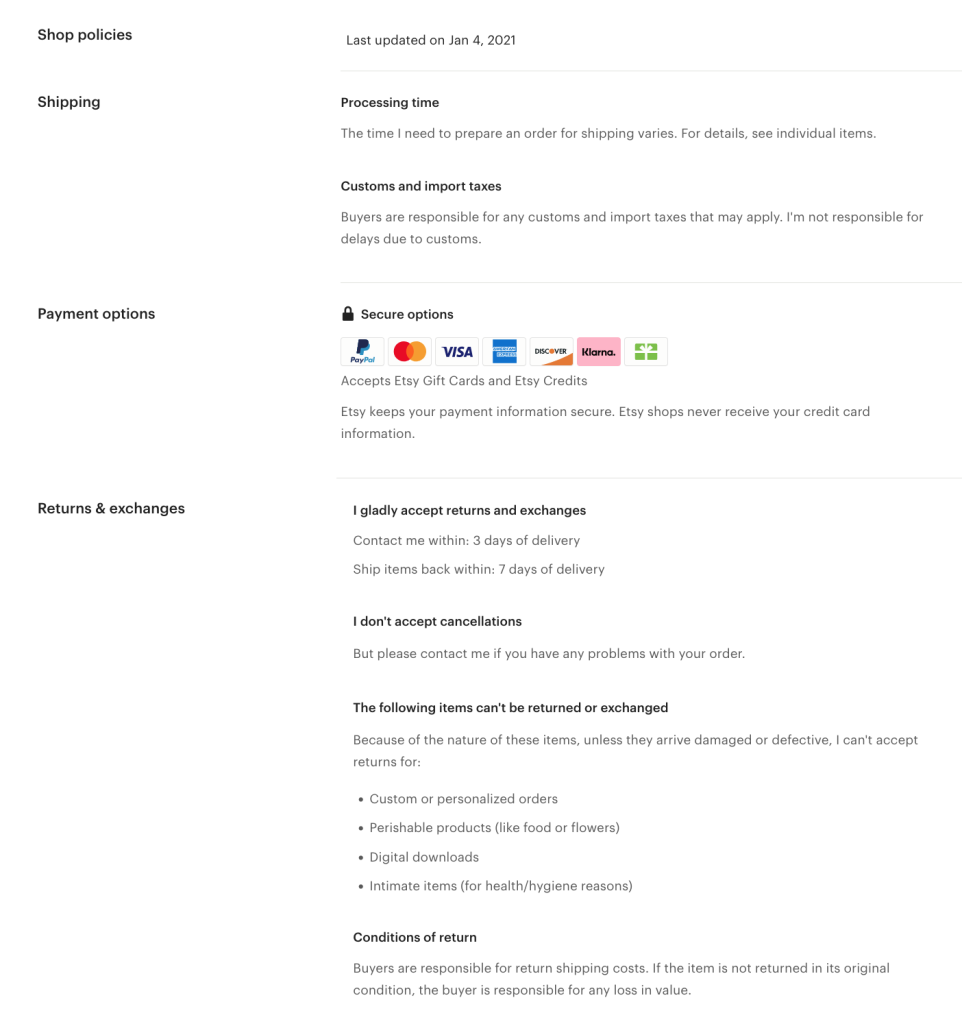
Step 2. Create a Listing for Your Shop
In order to post an art listing or item for sale on Etsy, the first step is to log in to your account and go to the Shop Manager.
Select “Listings” and Press “Add a listing” button. After that enter relevant keywords related to:
- The type of artwork (e.g., “Original Oil Painting”)
- Subject matter (e.g., “Abstract Landscape”)
- Size
- Color palette
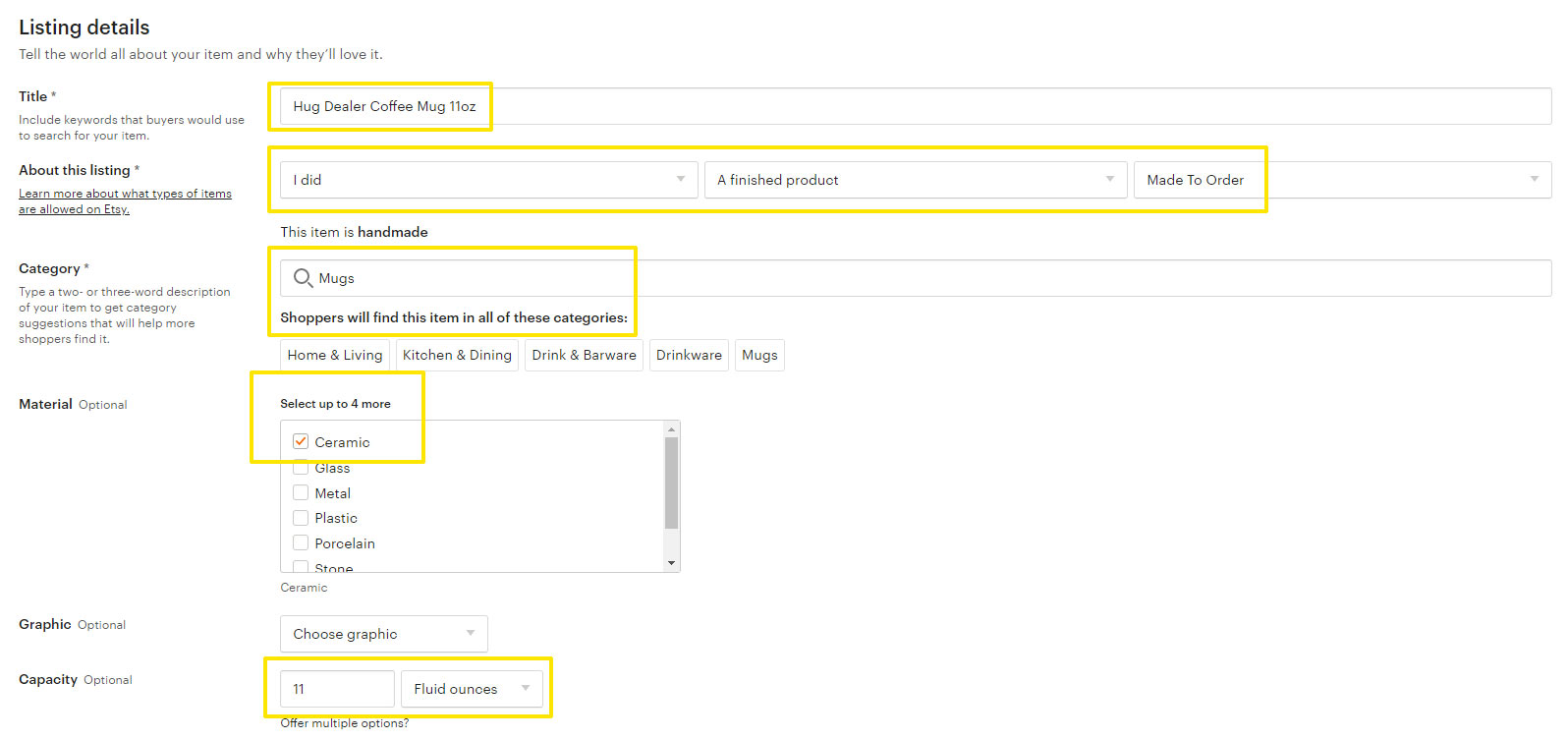
The listing can be made live or kept in draft mode. It takes up to 48 hours for the listings to be visible in the search.
>>> Read more: Best Products to Sell On Etsy: Recommended by Top Sellers
Step 3. Optimize Your Listings
Now, take the time to strategically optimize your listings in Etsy’s bustling marketplace by researching relevant keywords and integrating them naturally into your titles and tags.
Besides, you can increase your visibility in the search results since Etsy allows you to have 13 tags per listing. For instance, if a person is selling a print, they would use related words in the title to reach more people such as “art prints,” “home decor prints” or “wall prints.”
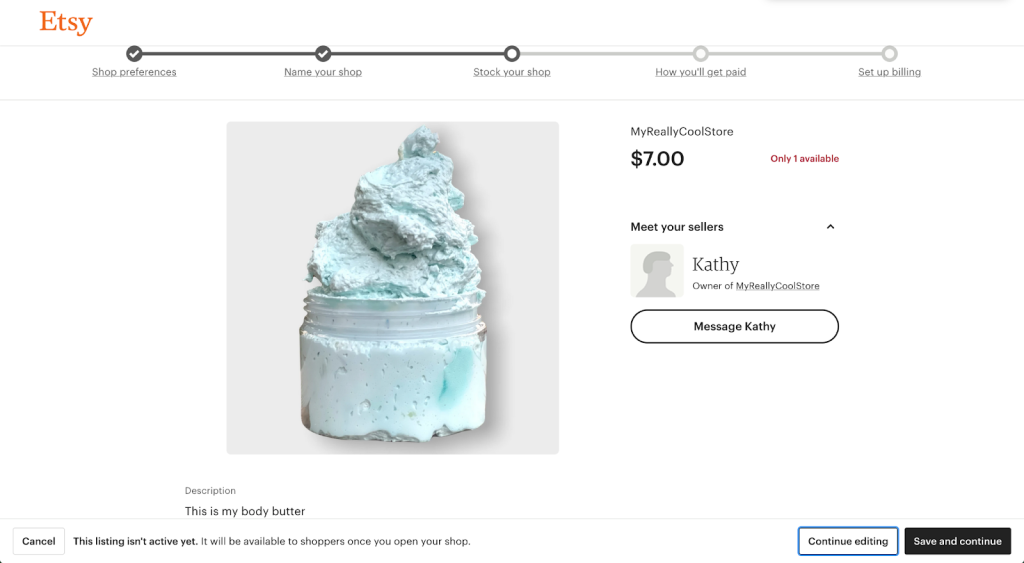
Further, there are also various words that a potential buyer may use such as material, size, technique, and the theme of artwork. Every tag contributes significantly in linking your item to the other related items hence increasing the chances of attracting more buyers.
Step 4. Set Pricing
Determining the price of one’s work can be complicated. However, there are certain factors that would enable a reasonable and beneficial price.
First, it is important to offer customers with different price levels to maximize the market share:
- High-end prices for original artwork
- Mid-range prices for limited edition prints
- More affordable prices for open edition prints or smaller pieces

Remember to consider the cost of materials and time invested in creating each piece. This includes expenses for items like canvases, paints, prints, and other supplies you use.
Additionally, market demand is crucial. Research what similar artists charge to get a sense of the average price range for art comparable to yours.
Step 5. Promote Your Art
When it comes to advertising your artistic work, think about investing in ads on social media networks such as Facebook or TikTok.
- Facebook Ads: You can select audiences by interests, age, place, and other factors on Facebook Ads. The platform also offers a relatively low cost per click compared to other forms of advertising.
- TikTok Ads: The TikTok algorithm promotes anything creative, like time-lapse videos or behind-the-scenes videos at the studio. Appealing ads that direct people from TikTok to your Etsy shop are vital for increasing sales.

Best Tips for Selling Art on Etsy
Selling prints is an exciting opportunity, but standing out takes more than creativity. Below are a few selling art on Etsy tips that will help you succeed.
1. Leverage Social Media
Sharing behind-the-scenes content on platforms like Instagram, Pinterest, and Facebook, as well as using relevant hashtags, is an important method for expanding your reach on Etsy.
In particular, you can start a blog or YouTube channel focused on topics related to your art by sharing tips on art techniques, home decor ideas featuring your work, or stories behind your creations.

2. Optimize for Etsy algorithm
Optimizing your listings for Etsy’s algorithm is essential when learning how to sell art on Etsy. Start with phrases that customers are likely to search for, like “handmade watercolor prints” or “custom art prints,” and incorporate these keywords naturally in your titles, tags, and descriptions.
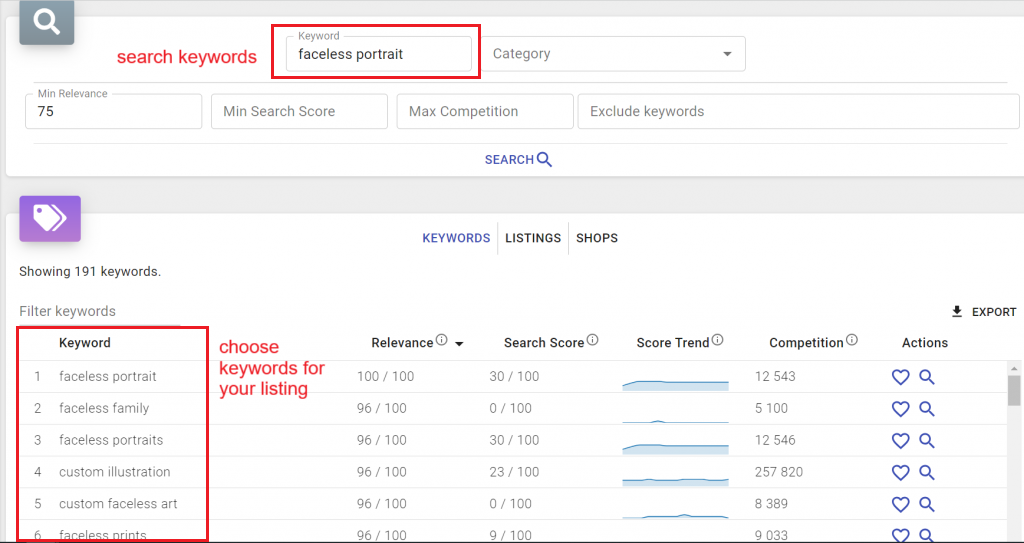
Regularly updating your listings is also important, as freshness and activity signal relevance. Lastly, maintain excellent customer service and gather positive reviews, as high ratings improve your shop’s standing and visibility, helping you reach a broader audience and ultimately boosting sales.
3. Utilize Etsy Ads
If you want to advertise your profiles even more efficiently, you may also turn to Etsy-related marketing features, known as Etsy Ads. The feature enhances visibility by allowing users to clip at the top of the search listing.

Setting up ads here is simple. You can select the listings you want to promote and establish a budget for your campaign. Etsy will charge you between $0.20 and $0.50 per ad click, and you only pay when a purchase is made. This makes advertising pricier items, such as original artwork or large prints, a more cost-effective strategy, as the ad cost is a smaller percentage of the item’s price.
4. Do Email Marketing
Email marketing is a crucial strategy to sell art on Etsy and effectively engaging your audience.

To get started, start by building a targeted email list and offering incentives, such as a discount for sign-ups, which can increase your reach. Craft compelling subject lines like “New Arrivals Just for You!” and segment your audience to tailor content. Share valuable insights and include clear calls to action like “Shop Now for Exclusive Prints!”.
5. Offer Customization Options
Offering customization can significantly elevate the appeal of your art on Etsy by creating a uniquely personal shopping experience. You can allow customers to select formats, framing options, different material finishes, or even the addition of names and dates for special occasions.
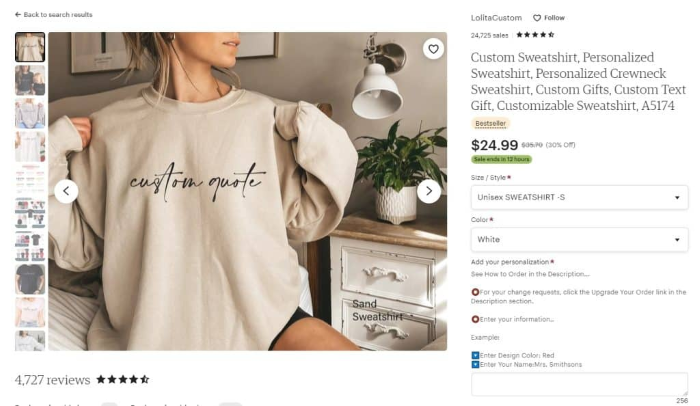
In addition to customizable features, provide a warm and welcoming process around the customization—reach out to customers to confirm their choices and ask clarifying questions if needed.
>>> Read more: 30 Best Digital Products to Sell on Etsy: A Profitable Suggestion
How to Make Significant Profits from Selling Art on Etsy?
To maximize profits from selling art on Etsy, a well-thought-out pricing strategy is essential. Here are key tips to help you set the right price:
1. Calculate Your Costs
Begin by identifying all expenses related to creating your art.
- Production Costs: Selling digital products involves costs of software or design tools. Meanwhile, physical products require the cost of packaging, materials, and labor.
- Shipping Costs: This cost will occur in selling physical items and can vary among different weights, sizes, and destinations.
- Marketing and Promotion: Ads on Etsy or social media, branding materials, and potentially hiring services for photography or graphic design are considered promotion costs.
- Tax Considerations: To sell art on Etsy, be aware that some costs may be tax-deductible such as materials and certain business expenses.
Next, calculate the total fees Etsy charges for your work.
- Listing Fees: $0.20 for each item you list for sale.
- Transaction Fees: 6.5% of the total selling amount including the shipping charges.
- Payment Processing Fees: This fee relies on the country and it is mostly in the range of 3% plus 25% transaction in the U.S.
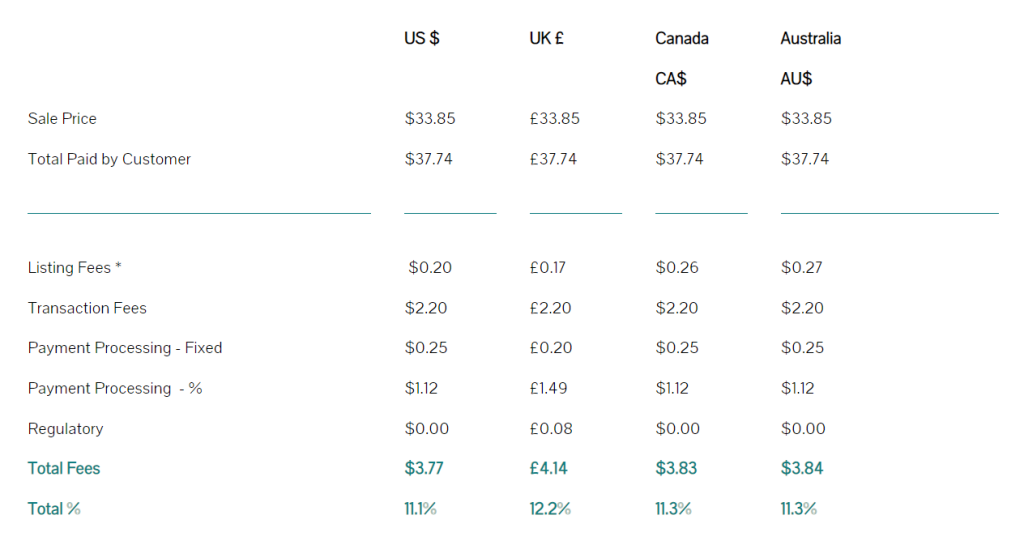
To efficiently manage these costs, you can browse Etsy Templates to create Excel sheets or use free calculating tools online.
2. Optimize Shipping
Many new Etsy sellers often underestimate the importance of safe and secure shipping, impacting both time and costs.
They apply a flat shipping fee of $4.95 for purchases below $35, while orders over $35 qualify for free shipping. If you sell art priced above $200, consider offering shipping insurance ranging from $3 to $24. Additionally, if you use Etsy Payments, a processing fee of 2.9% plus $0.30 is applied to each transaction.

Additionally, decide whether you will package your artwork yourself or hire someone to do it. Your choice will depend on the size of your art and the shipping destination.
3. Test Different Price Points
To sell art on Etsy efficiently, you can experiment with varying prices for your items to determine the most effective pricing strategy. This can involve trying different retail prices, finding a balance between your cost price and market standards, and pricing your products relative to other makers in your niche.
Testing price points can help you find a level that covers your costs and maximizes profitability.
For example, designer Laura Lane, known for her ceramics inspired by Cornish folklore, suggests offering products at various price levels.
She recommends including lower-priced items, a medium price point for your main products, and higher-priced items for special occasions.
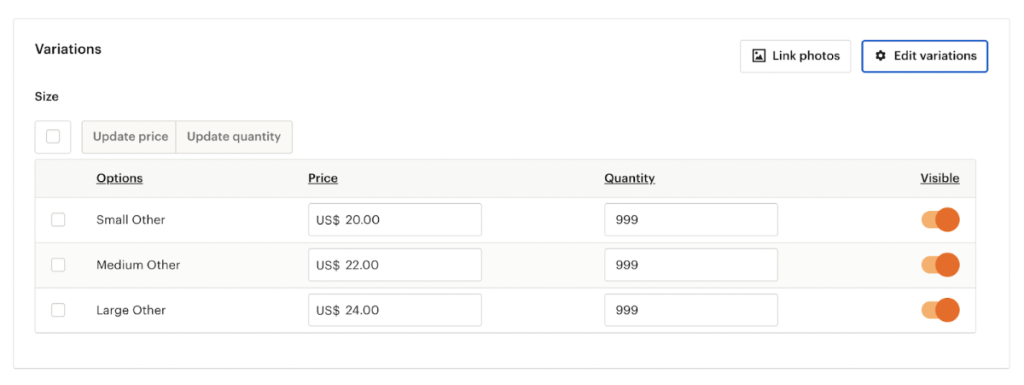
Lane further explains about setting fair prices, “Take a look at pricing from other makers and think about your place in the market”.
She continued, “I would say there is an etiquette to not undercut others which is why working out realistic prices is important even if you’re just selling as a hobby, selling at realistic prices also supports the full-time makers by not undercutting them”.
>>> Read more: How to Make Prints of Your Artwork and Earn Big Profits
Wrap-up
Selling art on Etsy is an exciting opportunity for artists to reach a global audience. By following these steps, you can set up a successful Etsy shop, attract customers, and make a living doing what you love. Remember, success on Etsy requires patience, persistence, and a dedication to customer satisfaction.







